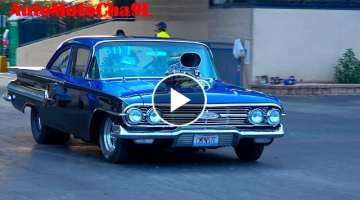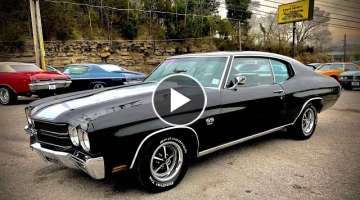1970 Plymouth GTX
The 1970 Plymouth Satellite GTX hardtop coupe models were treated as a kind of luxury Road Runner by dealers, devoid of the whimsical beep-beep horn, which did little to interest buyers, resulting in a sharp decline in sales to 7,748 for the model year.
The GTX was one of sixteen different Plymouth intermediate vehicles which included the Belvedere, Road Runner, Satellite, and the Sport Satellite. All of these models, for 1970, featured updated grilles, hoods, and fenders. They also were given a full-width rear panel with housed arrow-shaped taillamps. The front grille had dual headlamps at each corner.
The GTX had a heavy-duty TorqueFlite transmission, deluxe vinyl interior with foam-cushioned buck seats, exhaust trumpets, and a big-block 440 cubic-inch 'Super Commando' V8 engine. despite interim emissions tuning, the engine, which it shared with the Superbird and the Fury GT, delivered 375 horsepower. 'Plymouth Makes It' was the slogan for 1970, and Plymouth made more of the GTX by offering the Track Pack and a new 440 Six Pack option with 390 horsepower and triple two-barrel carburetors. Six-Pack, sometimes also spelled Six-Pac, was actually Dodge's terminology. Plymouth called the engine '440 6-bbl' in ads, but the large decals under the hood read '440+6.'
The 426 Street Hemi was still available, now with hydraulic valve lifters, delivering 425 horsepower and costing $711.
Hemis and the 440+6 were 'recommended for sanctioned events' in brochures, which also advised that neither could be ordered with air conditioning, manual transmission, or speed control.
Styling for the 1970 Plymouth GTX was moderately changed, though a concave back panel, dummy side scoops, and a big loop-type grille were noticeable. Wild new 'high impact' paint colors included In-Violet, Lime Light, Vitamin C Orange, Tor-Red, Lemon Twist, and Moulin Rouge. Dodge used the same hues, which cost a little extra, but with different names
VIDEO
Facebook Comments






























